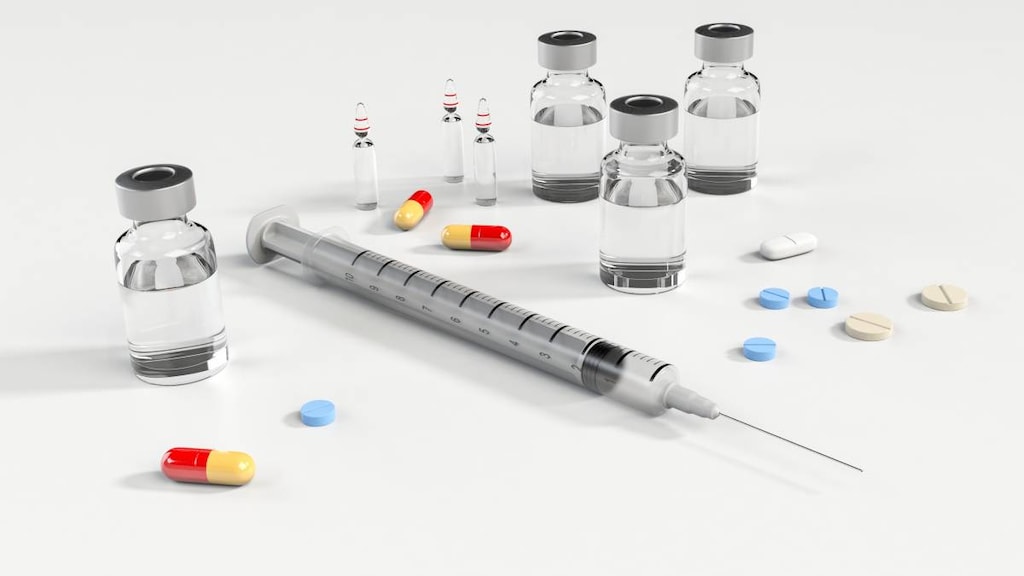What to know about add-on therapy in type 1 diabetes - adding something extra to insulin treatment

Add-on or adjunctive therapies are being investigated in people with type 1 diabetes mellitus in the hope that they can help overcome some of the problems with standalone insulin treatment. Add-on therapy is not a replacement for insulin, but is something given in addition.
Insulin is a must-have treatment for people with type 1 diabetes, which is a condition that affects your body’s ability to make and use its own insulin. Insulin helps move the sugar (glucose) in your blood, which is formed when your body breaks down the carbohydrate in your food, into your cells. Once in your cells, the blood sugar is used to fuel your body or is stored for later use. When you have diabetes your blood sugar levels get too high (hyperglycemia) because of your issue with insulin. Having high blood sugars can cause various health problems and even lead to death.
While insulin is a life-saving treatment if you have type 1 diabetes, and also for some people with the more common type 2 form of the disease, it does have certain downsides including:
-
Hypoglycemia, or low blood sugar, which can occur if too much insulin is used
-
Weight gain
-
Glycemic variability (the range over which a person’s blood glucose levels fluctuates)
-
Diabetic ketoacidosis, which occurs when a lack of glucose causes your body to produce poisonous levels of ketones and can occur if too little insulin is used
With this in mind, researchers are investigating the potential of metformin, glucagon-like peptide-1 (GLP-1) agonists and sodium-glucose co-transporter 2 (SGLT-2) inhibitors as add-on therapies to help adults with type 1 diabetes. These therapies are already used for type 2 diabetes.
The goals of add-on therapy in people with type 1 diabetes
The goals or benefits of add-on therapy in the treatment of type 1 diabetes include to:
- Improve glycemic control
- Reduce the amount of insulin required
- Reduce weight gain
- Reduce hypoglycemic episodes
- Delay the progression of complications associated with type 1 diabetes
The ideal add-on therapy would do all this without causing serious side effects and would ultimately provide people with an improved quality of life.
What's the current situation with add-on therapy use in type 1 diabetes?
The potential of add-on therapy was confirmed by the approval of Farxiga (dapagliflozin) as an add-on therapy for type 1 diabetes in Europe in 2019. Below is a brief summary of the DEPICT trials which were used to gain this approval.
Other key trials looking at add-on therapies, which are also mentioned below, have produced mixed results. Weighing up the risks associated with an add-on therapy against its benefits has been identified as an important consideration, especially when the therapy causes serious adverse effects such as diabetic ketoacidosis.
REMOVAL study investigates metformin as an add-on in type 1 diabetes
The REMOVAL study primarily focussed on whether metformin provided any cardiovascular benefits to those with type 1 diabetes. Results suggest that add-on metformin may have a role to play in cardiovascular risk management. However, they did not support the use of metformin to improve glycemic control, despite current guidelines suggesting the drug may. Add-on metformin:
- Briefly improved HbA1c (a test that monitors diabetes control over time), but that the results were not sustained
- Resulted in side effects, that were predominantly gastrointestinal, and resulted in more people stopping therapy in the metformin group compared with the placebo group (27% vs 12%)
- Did not reduce insulin dose requirements on average over the whole 3 years, but did reduce insulin dose requirements per unit of body weight in a small and sustained way after 6 months of treatment
- Helped to reduce body weight by an average of 2.6lbs (1.17kg)
- Reduced ‘bad’ low density lipoprotein (LDL) cholesterol by an average of 0.13mmol/L
- Did not cause an increase in hypoglycemia episodes
- Did lead to a reduction in atherosclerosis progression as measured by average maximal carotid artery intima-media thickness (cIMT), although this was only a tertiary outcome of the study. Add-on metformin did not reduce atherosclerosis progression as measured by common cIMT, which was the main outcome of the study.
The trial ran for 3 years and involved 428 people with type 1 diabetes who received metformin or placebo in addition to insulin.
Multiple studies investigate GLP-1 agonists as add-on therapy in type 1 diabetes
LIRA-1, ADJUNCT and MAG1C are studies that have investigated the use of the GLP-1 agonists Victoza (liraglutide) and Byetta (exenatide) as add-on treatments for type 1 diabetes. The use of insulin in combination with GLP-1 agonists has already been shown to improve glycemic control, induce weight loss and reduce the need for insulin in type 2 diabetes.
LIRA-1
LIRA-1 investigated the use of Victoza in overweight adults with type 1 diabetes and insufficient glycemic control. Add-on Victoza:
- Reduced hypoglycemic episodes
- Reduced bolus and total insulin dose
- Reduced body weight by 15lbs (6.8kg)
- Increased heart rate by 7.5 beats per minute
- Did not reduce HbA1c
- Was associated with more nausea (58% vs 10%), dyspepsia (22% vs 2%), diarrhoea (20% vs 2%), decreased appetite (14% vs 0%) and vomiting (14% vs 2%) compared with those who received placebo
LIRA-1 ran for 24 weeks and involved 100 people with type 1 diabetes who received Victoza or placebo in addition to insulin.
ADJUNCT ONE and TWO
ADJUNCT ONE and TWO looked at Victoza use in a broader group of type 1 diabetics. The trials had some positive results, but they also identified side effects that limit its usefulness.
ADJUNCT ONE was a year-long trial in 1400 type 1 diabetics who received Victoza (0.6, 1.2 or 1.8mg) or placebo in addition to their insulin. Add-on Victoza:
- Reduced HbA1c levels in people who received Victoza 1.8 and 1.2mg, but not 0.6mg. This result is in contrast to what was observed in the shorter LIRA-1 study, which enrolled only overweight people
- Reduced total insulin dose in people who received Victoza 1.8 and 1.2mg, but not 0.6mg
- Reduce body weight in people who received Victoza 1.8mg (10.1lbs, 4.9kg), 1.2mg (7.9lbs, 3.6kg) and 0.6mg (4.9lbs, 2.2kg)
- Increase episodes of symptomatic hypoglycemia regardless of the dose given
- Increased episodes of hyperglycemia with ketosis in people who received Victoza 1.8mg
ADJUNCT TWO was a 26-week trial involving 835 people whose daily dose of insulin was capped. The findings of this study were broadly similar to those of ADJUNCT ONE, with add-on therapy resulting in reduced HbA1c levels, body weight and insulin requirements. In people receiving Victoza 1.2mg, symptomatic hypoglycemia was more common, while hyperglycemia with ketosis was more common in the 1.8mg group.
MAG1C
The 26-week MAG1C study looked at the use of Byetta in 108 people with type 1 diabetes. Byetta did not improve HbA1c levels and was associated with gastrointestinal side effects, which led researchers to conclude that it does not have a future role as an add-on therapy.
Multiple studies investigate SGLT-2 inhibitors as add-on therapy in type 1 diabetes
DEPICT, InTANDEM3 and EASE investigated the potential of the SLGT-2 inhibitors Farxiga (dapagliflozin), Zynquista (sotagliflozin) and Jardiance (empagliflozin) as add-on therapies in type 1 diabetes.
DEPICT-1 and -2
DEPICT-1 and -2 looked at the use of Farxiga as an add-on therapy. The results of the DEPICT-1 trial were used to secure the March 2019 European approval of Farxiga 5mg as an add-on therapy for type 1 diabetes in people with a body mass index (BMI) greater than or equal to 27kg/m2 who had inadequate glycemic control with insulin alone. Approval in Japan has also been granted.
DEPICT-1 evaluated the use of Farxiga 5 and 10mg or placebo in addition to insulin in 778 people with type 1 diabetes inadequately controlled by insulin. Add-on Farxiga significantly reduced HbA1c levels during the 24 week trial.
DEPICT-2 was a slightly larger trial conducted in 813 people over 24 weeks. This trial also found that Farxiga improved glycemic control and was well tolerated. However, while no increase in hypoglycemia was seen, diabetic ketoacidosis was more common in the Farxiga 5 and 10mg groups (2.6% and 2.2%, respectively) compared with the placebo group (0%).
InTANDEM3
InTANDEM3 investigated the benefits of Zynquista, an inhibitor of both SGLT-1 and -2. The main study outcome (glycated hemoglobin levels - HbA1c levels - below 7% without severe hypoglycemia or diabetic ketoacidosis) was achieved in more people in the Zynquista group (28.6%) than the placebo group (15.2%). Diabetic ketoacidosis, however, was also more common in people receiving Zynquista (3% vs 0.6%). Zynquista treatment also provided a benefit in terms of weight loss (2.98kg), and reducing systolic blood pressure (3.5mgHg) and daily bolus insulin dose (2.8 units).
InTANDEM3 ran for 24 weeks and enrolled 1402 people with type-1 diabetes who received Zynquista or placebo in addition to insulin.
EASE 1, 2 and 3
The EASE trials evaluated Jardiance as an add-on therapy. EASE 2 and 3 were the larger of the three trials and were conducted in 1707 people over either 26 or 52 weeks. Add-on therapy with Jariance 2.5, 10 and 25mg improved glycemic control with glycated hemoglobin reductions of -0.28%, -0.54% and -0.65% respectively, being observed when compared against the result seen in placebo recipients. Average weight losses of 1.8, 3.0 and 3.4kg were also observed in the 2.5, 10 and 25mg groups, respectively, without increasing hypoglycemia rates being observed. Increased glucose time-in-range, reductions in daily insulin requirements and decreases in systolic blood pressure were other benefits observed in people who receive Jardiance. Like with other drugs in this class, genital infections were more common in jardiance recipients. The rate of diabetic ketoacidosis was similar in people treated with Jardiance 2.5mg compared to those treated with placebo, however, it was higher in those treated with Jardiance 10 or 25mg.
The final word on add-on therapy for type 1 diabetes
Add-on therapy shows some potential in the treatment of type 1 diabetes. Additional monitoring and action plans could play a role in helping to make add-on therapy a more viable option. Closely monitoring for changes in ketone levels to identify ketoacidosis and being ready to treat SLGT-2-associated genital infections quickly could play a role.
Article references
- American Diabetes Association. Type 1 diabetes means using insulin. Available at: https://www.diabetes.org/diabetes/medication-management. [Accessed August 15, 2020].
- American Diabetes Association 80th Scientific Sessions. ADA Meeting News. Experts will analyze risk-benefit profile of adjunct therapies for type 1 diabetes. Available at: https://www.adameetingnews.org/live-updates/session-coverage/experts-will-analyze-risk-benefit-profile-of-adjunct-therapies-for-type-1-diabetes/. [Access August 15, 2020].
- American Diabetes Association. Hypoglycemia (Low Blood sugar). Available at: https://www.diabetes.org/diabetes/medication-management/blood-glucose-testing-and-control/hypoglycemia. [Accessed August 15, 2020].
- Russell-Jones D, Khan R. Insulin-associated weight gain in diabetes--causes, effects and coping strategies. Diabetes Obes Metab. 2007;9(6):799-812. doi:10.1111/j.1463-1326.2006.00686.x.
- Hirsch Irl B. Glycemic Variability and Diabetes Complications: Does It Matter? Of Course It Does! Diabetes Care 2015 Aug; 38(8): 1610-1614. https://doi.org/10.2337/dc14-2898.
- American Diabetes Association. DKA (Ketoacidosis) & Ketones. Available at: https://www.diabetes.org/diabetes/complications/dka-ketoacidosis-ketones. [Accessed August 15, 2020].
- Pettus JH, Kushner JA, Valentine V, et al. Adjunct Therapy in Type 1 Diabetes: A Survey to Uncover Unmet Needs and Patient Preferences Beyond HbA1c Measures. Diabetes Technology & TherapeuticsVol. 21, No. 6. Published online May 22, 2019. https://doi.org/10.1089/dia.2019.0027.
- Petrie JR, Chaturvedi N, Ford I, et al. Cardiovascular and metabolic effects of metformin in patients with type 1 diabetes (REMOVAL): a double-blind, randomised, placebo-controlled trial [published correction appears in Lancet Diabetes Endocrinol. 2017 Aug;5(8):e5] [published correction appears in Lancet Diabetes Endocrinol. 2017 Nov;5(11):e7]. Lancet Diabetes Endocrinol. 2017;5(8):597-609. doi:10.1016/S2213-8587(17)30194-8.
- American Diabetes Association. Understanding A1C. A1C does it all. Available at: https://www.diabetes.org/a1c. [Accessed August 15, 2020].
- Dejgaard TF, Frandsen CS, Hansen TS, et al. Efficacy and safety of liraglutide for overweight adult patients with type 1 diabetes and insufficient glycaemic control (Lira-1): a randomised, double-blind, placebo-controlled trial. Lancet Diabetes Endocrinol. 2016;4(3):221-232. doi:10.1016/S2213-8587(15)00436-2.
- Mathieu C, Zinman B, Hemmingsson JU, et al. Efficacy and Safety of Liraglutide Added to Insulin Treatment in Type 1 Diabetes: The ADJUNCT ONE Treat-To-Target Randomized Trial. Diabetes Care. 2016;39(10):1702-1710. doi:10.2337/dc16-069.1.
- Johansen NJ, Dejgaard TF, Lund A, et al. Efficacy and safety of meal-time administration of short-acting exenatide for glycaemic control in type 1 diabetes (MAG1C): a randomised, double-blind, placebo-controlled trial. Lancet Diabetes Endocrinol. 2020;8(4):313-324. doi:10.1016/S2213-8587(20)30030-9.
- AstraZeneca. Forxiga approved in Europe for type-1 diabetes. March 25, 2019. Available at: https://www.astrazeneca.com/media-centre/press-releases/2019/forxiga-approved-in-europe-for-type-1-diabetes22032019.html. [Accessed August 15, 2020].
- AstraZeneca. Update on US regulatory decision for Farxiga in type-1 diabetes. July 15, 2019. Available at: https://www.astrazeneca.com/media-centre/press-releases/2019/update-on-us-regulatory-decision-for-farxiga-in-type-1-diabetes-15072019.html. [Accessed August 15, 2020].
- Dandona P, Mathieu C, Phillip M, et al. Efficacy and safety of dapagliflozin in patients with inadequately controlled type 1 diabetes (DEPICT-1): 24 week results from a multicentre, double-blind, phase 3, randomised controlled trial [published correction appears in Lancet Diabetes Endocrinol. 2017 Dec;5(12 ):e8]. Lancet Diabetes Endocrinol. 2017;5(11):864-876. doi:10.1016/S2213-8587(17)30308-X.
- Mathieu C, Dandona P, Gillard P, et al. Efficacy and Safety of Dapagliflozin in Patients With Inadequately Controlled Type 1 Diabetes (the DEPICT-2 Study): 24-Week Results From a Randomized Controlled Trial. Diabetes Care. 2018;41(9):1938-1946. doi:10.2337/dc18-0623.
- Garg SK, Henry RR, Banks P, et al. Effects of Sotagliflozin Added to Insulin in Patients with Type 1 Diabetes. N Engl J Med. 2017;377(24):2337-2348. doi:10.1056/NEJMoa1708337.
- Famulla S, Pieber TR, Eilbracht J, et al. Glucose Exposure and Variability with Empagliflozin as Adjunct to Insulin in Patients with Type 1 Diabetes: Continuous Glucose Monitoring Data from a 4-Week, Randomized, Placebo-Controlled Trial (EASE-1). Diabetes Technol Ther. 2017;19(1):49-60. doi:10.1089/dia.2016.0261.
- Rosenstock J, Marquard J, Laffel LM, et al. Empagliflozin as Adjunctive to Insulin Therapy in Type 1 Diabetes: The EASE Trials. Diabetes Care. 2018;41(12):2560-2569. doi:10.2337/dc18-1749.



